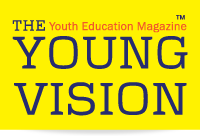
Books down: UAE education evolves outside classroom

It has been found that incorporating craft and sports into school life helps pupils to better connect with their work.
“When you look at old photos of public schools we see they had fully fledged bands, much more physical education programmes and home economics,” said Natasha Ridge, executive director at the Al Qasimi Foundation for Policy Research, of her experience in education over 17 years.
“When I first started doing my research here there were very few physical education classes, usually once a week, and very little or no music.
“We are starting to see more serious attention paid to physical education, even as we see obesity and lifestyle diseases climbing. I still don’t think there is nearly enough attention paid to physical education and the arts as integral to students’ learning.
“These can help to engage students who are not traditionally academic and may not be into science or maths or Arabic. I’m hopeful with the talk of happiness and well-being that we will go beyond good exam results and think about happiness as fulfilling your gifts and passions.”
The arts sector is active and the country has a tradition of music, but it is often only seen in cultural festivals, so the Ministry of Culture is working with Ms Ridge’s foundation to bring arts, education and culture into schools.
One example is a pilot programme where Northern Emirates men taught pupils to tie palm fronds to build huts. Camping in the desert is also being considered.
“When the students are building they are measuring, doing ratios, understanding geometry,” Ms Ridge said. “You can teach maths in applied ways. People see the arts as disconnected but it can be interwoven through science and maths as part of an integrated curriculum.”
Subjects such as design, technology and business, and keeping parents informed about new topics in the curriculum have been exciting changes for Asma Al Zaabi, an Emirati teacher.
“More students want to join a university and there is better preparation,” Ms Al Zaabi said. “Leaflets are distributed to give students an idea about their major. For instance, they could want to join the space programme.
“They now also understand what is in store after university. They are aware that in some majors they may not find a job and in others they could start their own business.”
There have also been wide changes in teacher training.
“Before we had supervisors who would visit once a semester but now we have lead teachers who visit us often,” Ms Al Zaabi said. “We also have professional development courses every week that update us about the curriculum, campaigns and activities planned.”
Smart learning has pupils using tablets to access information and prepare project work.
Technology has also resulted in better communication
with pupils and parents.
“We upload worksheets and programmes,” Ms Al Zaabi said. “It helps with attendance because a student can no longer run away from class and his parents will not know about it. Now we don’t have to keep trying to reach the parents, we instantly send them a message.”
Among other crucial developments listed by educators are public-private partnerships where expertise has been imported to help with education reform, the bilingual model of education, bridging the gap between high school and higher education, and the recently announced Emirati School model to unify and raise standards of teaching and learning.
Taking coursework out of the classroom has been important, said Mariam Al Hashmi, assistant professor at Zayed University’s College of Education.
“There are engaging, real-world, project-based learning opportunities to develop knowledge and skill unlike the boring approach used in the past,” Ms Al Hashmi said.
Instead of Arabic being taught from a textbook, students read literary texts, write book reviews and edit each other’s work.
“They don’t read paragraphs from a text, they critique novels,” Ms Al Hashmi said. “In science and technology, there are venues for students to showcase projects they produce after learning the subject matter.
“Instead of learning inside a textbook, it helps to build their knowledge and share their work with the community. It guides and motivates them.”
Another important goal, she said, was to encourage Emiratis to become teachers.
“It is a national priority and demand that we have more local teachers,” Ms Al Hashmi said. “I have always wanted to be a teacher. I’m passionate about learning and want to spread my passion and encourage others to join.”
Changes in UAE educational sphere from 1953 – 2020
1950 – 1970: Variety of curricula brought from schools in countries such as Bahrain, Egypt, Kuwait, Qatar, Saudi Arabia
1971 – 1990: Two-track system – arts and science
Arabic was language of instruction
The National Curriculum Project began in 1979 and a national curriculum was implemented nationwide by 1985
1991 – 2000: The Ministry of Education partnered with UAE University to develop a new English language curriculum across all grades
Model schools were established in 1994 that used English as the language of instruction in science subjects and math
All secondary schools taught computer science by 1994-95
2001-2010: Madares Al Ghad or Schools of Tomorrow initiative launched in 2007
English textbooks introduced in specially selected schools for science, math
New School Model launched in 2010 in Abu Dhabi introducing bilingual instruction in Arabic and English
Emphasis on science, technology, engineering, math
2011 – 2020: Mohammed Bin Rashid Smart Learning Program established by Dubai Government in 2012 with a renewed emphasis on technology
Aim to provide grade 6 to 12 students with tablets, teachers with laptops by 2019
Ministry of Education introduces new streams in 2016
New subjects introduced such as innovative design, health sciences, career guidance, life skills, business management
Source: Curriculum development in the United Arab Emirates by Natasha Ridge, Susan Kippels and Samar Farah
